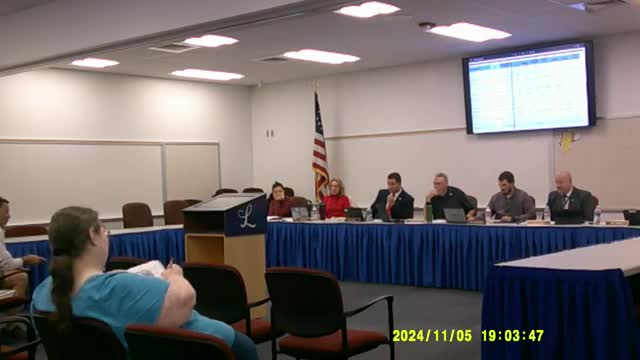School Board reallocates $537,000 for capital improvement projects
November 05, 2024 | Littlestown Area SD, School Districts, Pennsylvania
This article was created by AI summarizing key points discussed. AI makes mistakes, so for full details and context, please refer to the video of the full meeting. Please report any errors so we can fix them. Report an error »

During the Littlestown School Board's Facilities, Planning, and Safety (FP&S) meeting on November 5, 2024, a significant discussion centered around the allocation of $537,000 intended for capital projects, particularly for improvements at the middle and high schools. The board members expressed concerns about how this funding would be managed and its implications for future projects.
The primary focus was on the decision to place the funds into a capital reserve account. This move aims to ensure that the money is available for necessary facility improvements while also allowing flexibility in its use. Board members emphasized the importance of maintaining the school buildings in a "warm, safe, and dry" condition, which is a fundamental principle of school infrastructure management.
A key point raised during the meeting was the potential complications of accessing these funds if they were assigned to specific projects. Members discussed the risks of locking the money into a designated account, which could hinder the board's ability to respond to urgent repairs, such as structural issues or equipment failures. The conversation highlighted the need for a contingency plan that would allow for quick access to funds in case of emergencies, without the lengthy process of reallocation that could be required if the money were tied up in a specific project.
Additionally, the board clarified that the allocated funds would strictly be used for facility-related expenses, excluding operational costs like janitorial services or lunchroom deficits. This restriction aims to ensure that the money directly contributes to improving the physical environment of the schools.
In conclusion, the Littlestown School Board's discussions reflect a careful balancing act between prudent financial management and the need for responsive action in maintaining school facilities. As the board moves forward, the implications of these funding decisions will be closely monitored, particularly in light of potential future facility improvements and the ongoing need for maintenance. The board's next steps will likely involve finalizing the allocation strategy and ensuring that the funds are utilized effectively for the benefit of the students and the community.
The primary focus was on the decision to place the funds into a capital reserve account. This move aims to ensure that the money is available for necessary facility improvements while also allowing flexibility in its use. Board members emphasized the importance of maintaining the school buildings in a "warm, safe, and dry" condition, which is a fundamental principle of school infrastructure management.
A key point raised during the meeting was the potential complications of accessing these funds if they were assigned to specific projects. Members discussed the risks of locking the money into a designated account, which could hinder the board's ability to respond to urgent repairs, such as structural issues or equipment failures. The conversation highlighted the need for a contingency plan that would allow for quick access to funds in case of emergencies, without the lengthy process of reallocation that could be required if the money were tied up in a specific project.
Additionally, the board clarified that the allocated funds would strictly be used for facility-related expenses, excluding operational costs like janitorial services or lunchroom deficits. This restriction aims to ensure that the money directly contributes to improving the physical environment of the schools.
In conclusion, the Littlestown School Board's discussions reflect a careful balancing act between prudent financial management and the need for responsive action in maintaining school facilities. As the board moves forward, the implications of these funding decisions will be closely monitored, particularly in light of potential future facility improvements and the ongoing need for maintenance. The board's next steps will likely involve finalizing the allocation strategy and ensuring that the funds are utilized effectively for the benefit of the students and the community.
View full meeting
This article is based on a recent meeting—watch the full video and explore the complete transcript for deeper insights into the discussion.
View full meeting